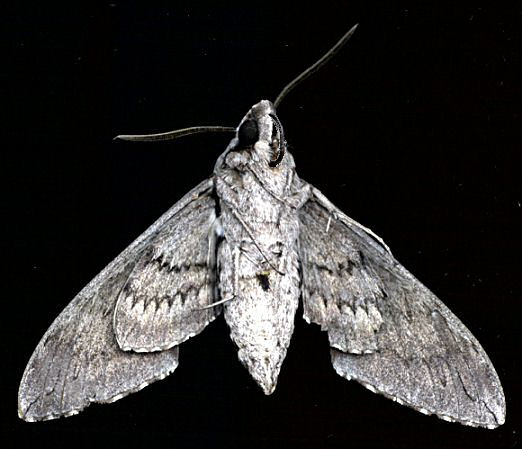

Tongues have a way of getting in the way, as everyone who has bitten theirs knows. It's bad enough with us, but what about some of those creatures whose tongues are much too long for their mouths? Most of us know that woodpeckers have long tongues to drag insects out of their wooden tunnels, but where on earth do they keep them? In one sense, packed around their skulls. The supporting bones of tongue are the hyoid bones, and in woodpeckers, these bones are greatly lengthened. Encased in a sheath and attached to muscles, they go out the sides of the neck, come forward over the back and top of the skull, and insert in the nose cavity. Muscles can pull these bones far forward, extending the tongue up to four times the length of the beak.
Many moths also have tongue troubles, possessing great length to reach
nectar deep within a flower. The Hummingbird Moth has a tongue that, stretched out, is
longer than its body. But coiled like a watch spring, it's a neat little
bundle.

Contributor: Arthur H. Harris, Laboratory for Environmental Biology, Centennial Museum, University of Texas at El Paso.
Desert Diary is a joint production of the Centennial Museum and KTEP National Public Radio at the University of Texas at El Paso.

The underside of a sphinx moth, showing the coiled tongue. Scanned image by A.H. Harris.